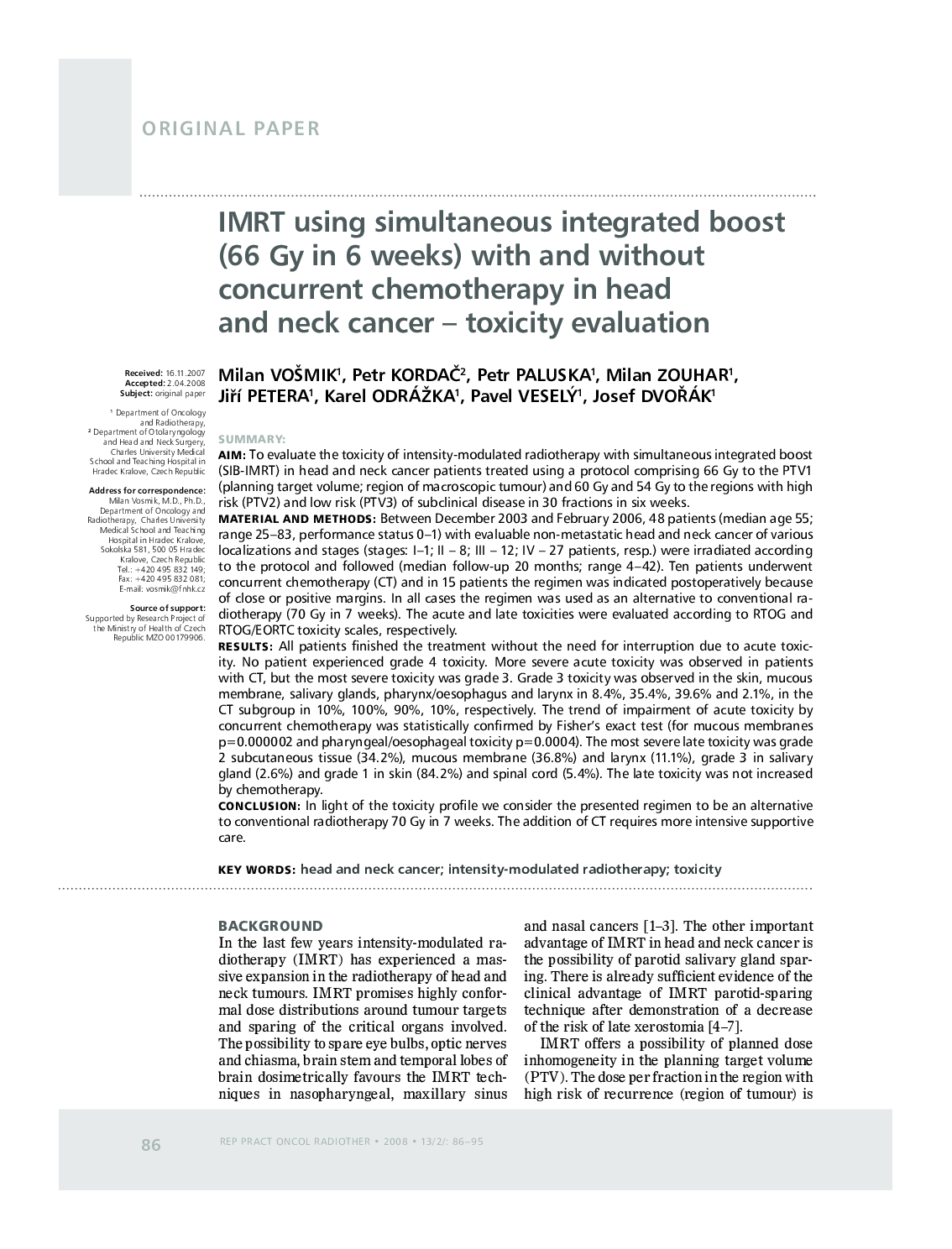| کد مقاله | کد نشریه | سال انتشار | مقاله انگلیسی | نسخه تمام متن |
|---|---|---|---|---|
| 1855781 | 1529450 | 2008 | 10 صفحه PDF | دانلود رایگان |

SummaryAimTo evaluate the toxicity of intensity-modulated radiotherapy with simultaneous integrated boost (SIB-IMRT) in head and neck cancer patients treated using a protocol comprising 66 Gy to the PTV1 (planning target volume; region of macroscopic tumour) and 60 Gy and 54 Gy to the regions with high risk (PTV2) and low risk (PTV3) of subclinical disease in 30 fractions in six weeks.Material and MethodsBetween December 2003 and February 2006, 48 patients (median age 55; range 25–83, performance status 0–1) with evaluable non-metastatic head and neck cancer of various localizations and stages (stages: I–1; II–8; III–12; IV–27 patients, resp.) were irradiated according to the protocol and followed (median follow-up 20 months; range 4–42). Ten patients underwent concurrent chemotherapy (CT) and in 15 patients the regimen was indicated postoperatively because of close or positive margins. In all cases the regimen was used as an alternative to conventional radiotherapy (70 Gy in 7 weeks). The acute and late toxicities were evaluated according to RTOG and RTOG/EORTC toxicity scales, respectively.ResultsAll patients finished the treatment without the need for interruption due to acute toxicity. No patient experienced grade 4 toxicity. More severe acute toxicity was observed in patients with CT, but the most severe toxicity was grade 3. Grade 3 toxicity was observed in the skin, mucous membrane, salivary glands, pharynx/oesophagus and larynx in 8.4%, 35.4%, 39.6% and 2.1%, in the CT subgroup in 10%, 100%, 90%, 10%, respectively. The trend of impairment of acute toxicity by concurrent chemotherapy was statistically confirmed by Fisher's exact test (for mucous membranes p=0.000002 and pharyngeal/oesophageal toxicity p=0.0004). The most severe late toxicity was grade 2 subcutaneous tissue (34.2%), mucous membrane (36.8%) and larynx (11.1%), grade 3 in salivary gland (2.6%) and grade 1 in skin (84.2%) and spinal cord (5.4%). The late toxicity was not increased by chemotherapy.ConclusionIn light of the toxicity profile we consider the presented regimen to be an alternative to conventional radiotherapy 70 Gy in 7 weeks. The addition of CT requires more intensive supportive care.
Journal: Reports of Practical Oncology & Radiotherapy - Volume 13, Issue 2, March–April 2008, Pages 86-95